Shaken and Stirred
By Fr Pat O’Shea
Fr Francis Vernon Douglas
By Fr Pat O’Shea
Fr Francis Vernon Douglas
By Vera Santos
On 13 April Gaudencio Cardinal Rosales, retired Archbishop of Manila, was the main celebrant at a Mass to celebrate the 25th anniversary of the founding of Punla, the only L’Arche community in the Philippines. It is located in Cainta, Rizal.’L’Arche’ is the French for ‘The Ark’, a name derived from Noah’s Ark. L’Arche Philippines is known as Ang Arko ng Pilipinas.
Over the years a number of Columban seminarians have done pastoral work in Punla.
In this article Vera Santos tells us how her ten years of involvement with Ang Arko has blessed her.
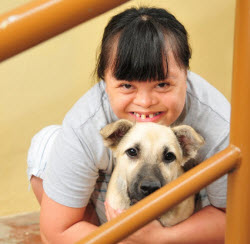
Lala and Hachi
‘Blessed be the God and Father of our Lord Jesus Christ, the Father of compassion and God of all encouragement,who encourages us in our every affliction, so that we may be able to encourage those who are in any affliction with the encouragement with which we ourselves are encouraged by God’ (2 Corinthians 1:3-4, New American Bible Revised Edition).
For the past ten years that I have been a friend and now a volunteer in the Punla Community, I’ve come to realize that one of the most joyful discoveries in my encounter with the Core Members is that in recognizing, affirming and comforting them, I find myself being recognized, affirmed and comforted as well. Let me recount my experiences with Raymond, Jordan, John Paul, Mariflor, Rea, Lala and Benito and why I find peace, joy and comfort when I am in Arko:
Ang Arkong Pilipinas – Special Friends
By Mercy Gawason
My name is Mercy Gawason. I grew up in the mountainous Zamboanga peninsula of northwest Mindanao in the Philippines which is the homeland of the Subanen people. My parents are farmers. My older sister Marilyn and older brother Rolly, are married and are also farmers. My three younger brothers Arnolfo, Jeyar, and Jomar are still at school.

Recently our Subanen Crafts Project acquired a small point-and-shoot camera. With this I can now take you on a photo journey up the trails and rivers to my mountain home, and then, through my pictures, I can more easily explain how the Subanen Crafts Project has helped my family and our farm.
By Fr Jovito Dales
Fr Jovito Dales, who was born in Marawi City and grew up in Ozamiz City, tells the second part of his vocation story. After serving in Peru he is now Columban Vocation Director in the Philippines.
I joined the Columbans in June 1997. The following year, with the opening of our International Theologate in Chicago, I was sent to the United States for theological studies. In 2002 I left for Bolivia for five months for an intensive course in Spanish language and then proceeded to Peru for my First Missionary Assignment (FMA). I had a meaningful experience in Peru with an interruption in 2003 when my father died.
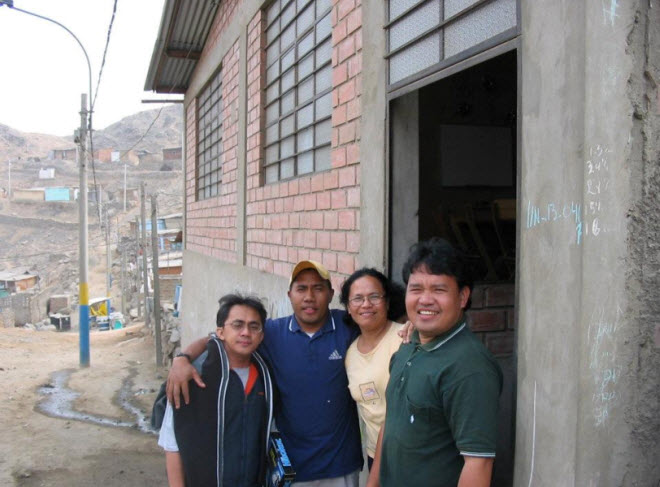
Fr Jovito with Fijian Columban Fr William Lee and Filipino Columban Lay Missionaries Irma Cantago and John Din in Lima, Peru
The Columbans are family-orientated. The fact that I was able to come home for my Dad’s funeral made me even more appreciative of them. I finished my theology in 2005. The following years until my priestly ordination were spent in the Columban parish of Our Lady of Remedies, Malate, Manila. I was ordained deacon there in 2006. It was there that I learned more about poverty in my own country.
The three members of PH21, the 21st group of Columban Lay Missionaries from the Philippines began their nine-month orientation program on 3 June. They are staying in St Columban’s Lay Mission Center, 34 Rosario Drive, Cubao, 111 Quezon City. Here are profiles of the three.
PH21 (L to R): Jenanydel, Luda and Ivy May
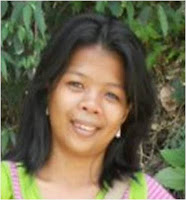 Jenanydel Nola, 24, from the T’Boli Tribe of Maitum, Sarangani Province. Del, second of eight children, is a graduate in Economics of Notre Dame University of Dadiangas. From June 2010 to March 2012 she worked at St Marcellin Daycare Center, established in their place for the T’bolis through the generosity of her grandfather, Malico Nola. After two years as a day care worker, she was given a new assignment as a self-help facilitator with the tribal women’s group, under the supervision of the Marist Brothers and Sisters (Notre Dame Business Resource Center). Aside from being a teacher and a community facilitator, Del has also worked as a researcher and was appointed Parent Leader of the PantawidPamilyang Pilipino Program in her area.
Jenanydel Nola, 24, from the T’Boli Tribe of Maitum, Sarangani Province. Del, second of eight children, is a graduate in Economics of Notre Dame University of Dadiangas. From June 2010 to March 2012 she worked at St Marcellin Daycare Center, established in their place for the T’bolis through the generosity of her grandfather, Malico Nola. After two years as a day care worker, she was given a new assignment as a self-help facilitator with the tribal women’s group, under the supervision of the Marist Brothers and Sisters (Notre Dame Business Resource Center). Aside from being a teacher and a community facilitator, Del has also worked as a researcher and was appointed Parent Leader of the PantawidPamilyang Pilipino Program in her area.
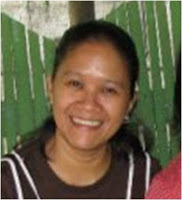 Luda Egbalic, 39, is a former Redemptorist lay missionary. Luda, second of ten children, completed a degree in Bachelor of Science in Education in Bukidnon State University in 1994. Since then she has been independent from her family, working as a public school teacher from 1995 to 1999, then as teacher/academic coordinator from 2000 to 2009 in the Elementary Department of San Isidro College,Malaybalay City. She came to Columban Lay Mission from working with the Cebu Redemptorist Urban Mission Team inBirhensaRegla Parish, Lapu-Lapu City,where she was involved particularly with the Basic Ecclesial Communities and in sectoral organizing.
Luda Egbalic, 39, is a former Redemptorist lay missionary. Luda, second of ten children, completed a degree in Bachelor of Science in Education in Bukidnon State University in 1994. Since then she has been independent from her family, working as a public school teacher from 1995 to 1999, then as teacher/academic coordinator from 2000 to 2009 in the Elementary Department of San Isidro College,Malaybalay City. She came to Columban Lay Mission from working with the Cebu Redemptorist Urban Mission Team inBirhensaRegla Parish, Lapu-Lapu City,where she was involved particularly with the Basic Ecclesial Communities and in sectoral organizing.
By Delia Hynson-Jagonia
 My life is about serving the people. I worked with non-governmental organizations (NGOs), with the Church through a social action center, with the Columbans in Columban Lay Missionaries - Philippines (CLM-P) and Subanen Crafts. I was trained by the Columban Sisters in Immaculate Conception College (ICC), now La Salle University, Ozamiz City, where I studied. I had a good job, worked abroad and in Manila and visited different countries but later chose to go back to Ozamiz to be with my mother. The impact of the Columbans in my life started in the 1980s with Fr Peter Leonard who conducted a live-in five-week training program on lay leadership.
My life is about serving the people. I worked with non-governmental organizations (NGOs), with the Church through a social action center, with the Columbans in Columban Lay Missionaries - Philippines (CLM-P) and Subanen Crafts. I was trained by the Columban Sisters in Immaculate Conception College (ICC), now La Salle University, Ozamiz City, where I studied. I had a good job, worked abroad and in Manila and visited different countries but later chose to go back to Ozamiz to be with my mother. The impact of the Columbans in my life started in the 1980s with Fr Peter Leonard who conducted a live-in five-week training program on lay leadership.
Fr Vinnie Busch invited me to be part of the staff of CLM-P in Ozamiz. He was the full-time coordinator there but worked part-time in Subanen Crafts as part of the Mission and Art Ministry. I did not see myself as being called to be a Columban Lay Missionary, as I had come home to care for my mother. But I opted to be a CLM-P staff member in 1999. I was to receive the teams assigned to Mindanao and to help prepare lay missionaries for assignment abroad. I accompanied them for exposure in areas in Mindanao. Being with CLM-P, I was to journey with the lay missionaries, to be there at times when they needed a friend, to be a staff memberready to accommodate their concerns.
When I started working with Father Vinnie I became interested in his creation spirituality, the blending of his artistic works in drawing and creating mandalas. I didn’t have an opportunity to express my artistic talents but was in awe when I met Father Vinnie. While I was happy working with CLM-P, half of my body and soul was with Subanen Crafts. So I was inspired to dedicate myself to art and in 2006 resigned from CLM-P to work full-time with Subanen Crafts.
By Fr G. Chris Saenz
The author is from the USA and was ordained in 2000. Part of his preparation for the priesthood was in the Philippines. He is currently Rector of the Latin America Formation Program of the Columbans in Chile and Peru and lives in Santiago, Chile.
The ‘small things”, as St Thérèse, the Little Flower would say, are an important aspect of spirituality and mission. But don’t get a romantic notion of what that means or how it looks. Often the small things can be a nuisance, an inconvenience and a pain in the neck. That is the moment we have to be alert to what God is teaching us through these small things. I learned such some years ago when I worked in southern Chile.
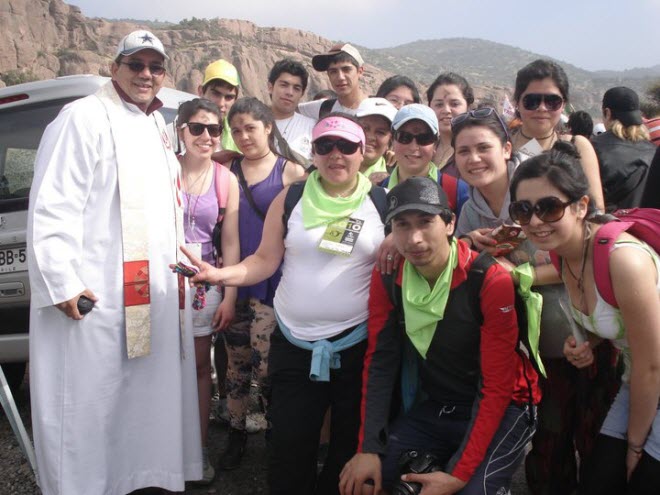
Fr Chris and friends on a pilgrimage in honor of St Teresa of the Andes
I was living in the rural countryside populated by the Mapuche, who are indigenous to parts of Chile and Argentina. One day, after visitations and meetings, I arrived home late, tired and hungry. With a cup of tea I sat down to watch the local news. Suddenly there was a knock on my door. What! Who can that be! My mind raced thus, completely upset by the intrusion. I opened the door to see Kata, a Columban lay missionary from Fiji who lived next door. ‘Sorry to disturb you’, she apologized, probably seeing discontent on my face. ‘There is a woman here to see you. She’s in our house.’ I told the Kata that I’d be there. With a huff and a puff I changed my clothes and went over. It was unusual for someone, especially a woman, to be out at this hour. I was surprised to discover that there were two women waiting for me, one being Maria who lived quite far away. They greeted me.
We from North America and Europe value being direct,‘getting to the point’,-so as notto ‘waste time’. However, in Chilebeing direct is not a value. It is considered rude. The women began with the usual general questions of how was I doing, my family, my health, etc. Having been in Chile for several years I was accustomed to this, but that night it was torture. I begrudgingly participated. After about 30 minutes the women finally got to the point. Maria explained that after shopping in the large city, two hours away by bus, they had arrived back here late and she had missed the last bus to her area.
By Vissia Hernandez
We celebrate the feast of Our Lady of Guadalupe, the secondary Patroness of the Philippines and Protectress of Unborn Children, on December 12. Tepeyac, or the Hill of Tepeyac, Mexico, is where the Blessed Virgin appeared to San Juan Diego in 1531. The shrine of Nuestra Señora de Guadalupe, Our Lady of Guadalupe, is one of the most visited in the world. Vissia Hernandez has written previously for Misyon.
|
|
|---|
‘It’s like Baclaran’, was my first impression, as I got off the city bus. Stores and stalls selling everything from recuerdos y zapatos (souvenirs and shoes) to comidas y bebidas (food and drink) line both sides of a pedestrian area leading to La Villa (‘the town’, referring to the Basilica compound). A brisk five-minute walk away, behind a tall fence, towers an ancient brick church – the old Basilica, with its imposing yellow dome, twin bell-towers and ornate facade.
By Jehoon Augustine Lee
By Fr Jovito Dales
Father Jovito shares how his childhood wonder at the ‘huge house inhabited by white strangers’ in Ozamiz City led him ultimately to leave a good job in the bank and become a Columban priest in Peru. He is now back in the Philippines as vocation director. He will be very happy to hear from any young man interested in following his footsteps at seladmj@yahoo.com
‘I pray especially for you to have the gifts of the Spirit of Discernment and the Spirit of Mission.’ That was the prayer of Columban Fr Desmond Hartford when he confirmed me in January 1997 in the chapel of the Carmelite Sisters, Marawi City, Lanao del Sur. After finding no proof of my confirmation Monsignor Des, then Apostolic Administrator of the Prelature of Marawi, suggested that I be confirmed there. He looked for my baptismal godparents, whom I had never met. He eventually found them and brought them to the ceremony. That was an unforgettable event precisely because I was born and baptized in Marawi City in 1969, but grew up in Catadman, Ozamiz City, when we left the war-torn place in 1972.
My first encounter with the Columbans was during my elementary years. Going to school I passed by a huge house inhabited by white strangers. We called it ‘Ang Palasyo’, ‘The Palace’, as it was the biggest house in town. Those passing by were curious about the overwhelmingly big house, about those white men what they were they doing in our place. Their towering height seemed threatening to little kids like me. But I was not afraid of them because they were very nice. They tried to speak and ask questions in Bisaya, and would even laugh as they were corrected. I learned that they were missionary priests and that Ang Palasyo was the central house of the Columban Fathers in Ozamiz City. Most of the Columbans I met in Mindanao were people-oriented, lived a simple lifestyle, were very down to earth and courageous, and chose to stay despite the danger – things that captivated me as I was silently discerning my vocation.
